Cn-down > Domestic news > News content
2023-04-16 来源:金绒 浏览量:1389
summary
The market price remained stable this week.
According to data released by the General Administration of Customs, China's exports increased by 8.4% year-on-year in the first quarter, with the growth rate of textiles and clothing exports to the world turning from negative to positive. Thanks to policy support, foreign trade enterprises are actively exploring new markets, resulting in an increase in order volume.
However, the global economic environment is still not optimistic, and factors such as weak external demand, insufficient orders, and geopolitical risks remain practical challenges. Currently, the high prices of down and feather products have led product companies to adopt a more conservative business strategy, resulting in a strong wait-and-see sentiment among brand owners.
The seedling price of white feather meat duck experienced a collapse in April, dropping nearly 60% in half a month. The rapid increase in the supply of duck seedlings is one of the reasons for the sharp drop in their prices. The industry currently estimates that duck seedlings produce approximately 10.5 million feathers per day, and the situation of insufficient supply of raw material feathers may change as a result.
Exchange rate of USD to RMB: 6.8764
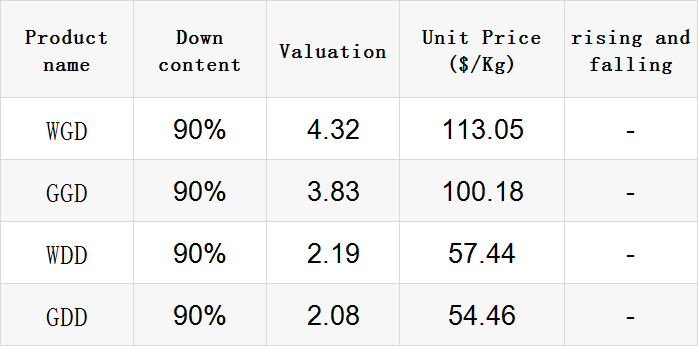
Exchange rate of USD to RMB: 6.8882
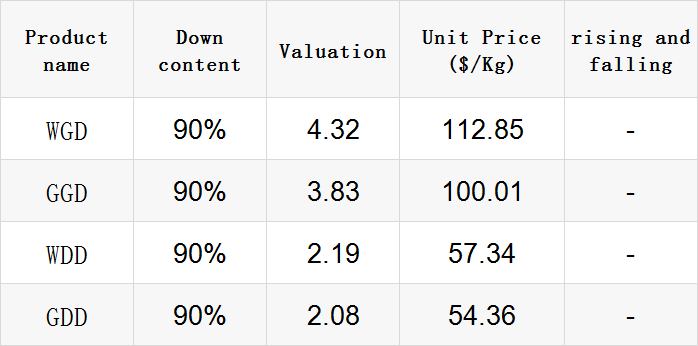
Exchange rate of USD to RMB: 6.8854

Exchange rate of USD to RMB: 6.8658
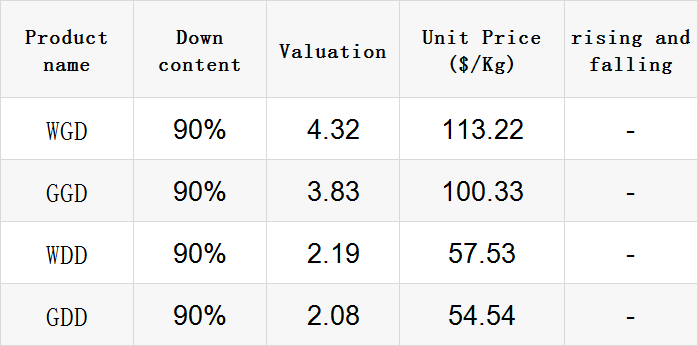
Exchange rate of USD to RMB: 6.8606
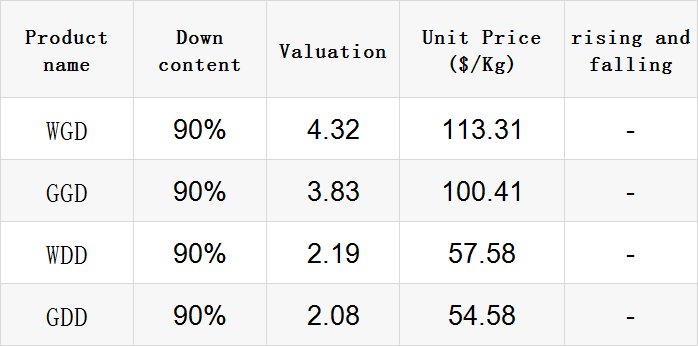
good news
Recently, French President Macron arrived in China with a "luxurious lineup". Subsequently, the heads of state of China and France jointly witnessed the signing of multiple bilateral cooperation documents in fields such as agriculture, food, technology, aviation, civil nuclear energy, sustainable development, culture, etc.
In the three years since the epidemic, the trade volume between the two countries has still achieved significant growth, from over 60 billion euros to over 80 billion euros. This Macron's visit to China will elevate the level of economic and trade exchanges between France and China in the post pandemic era.

In the agreement signed by both parties, whether it is an aircraft order or a container ship order, the unit of amount is RMB. In other words, orders are likely to be priced in RMB. This means that after France receives the RMB, it may continue to trade with Chinese companies, and Chinese goods exported to France can effectively cope with inflation.
Former Vice Minister of Commerce Wei Jianguo stated in an exclusive interview with China Daily on Friday that he is optimistic about the economic and trade relations between China and France, believing that within two to three years, the bilateral trade volume will exceed the 100 billion dollar mark.
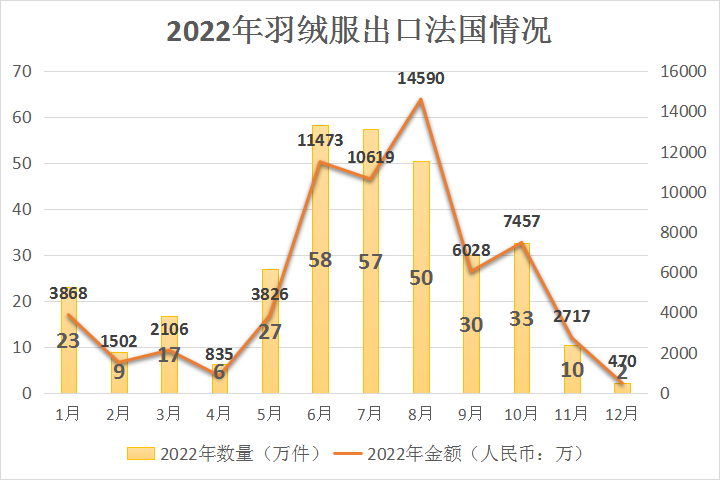
According to the statistics of the General Administration of Customs, in 2022, the import and export trade volume between China and France was 541.76 billion yuan, accounting for 9% of the total trade volume between China and the European Union, while Germany accounted for 28.87%, and the Netherlands also accounted for 15.38%.
Relatively speaking, the share of Chinese down jackets exported to France is relatively large, with a total of 3.229 million pieces exported in 2022, accounting for 17% of the total exports to the European Union. In addition, as France is also a major country in goose and duck farming, the trade in down feathers is relatively rare.
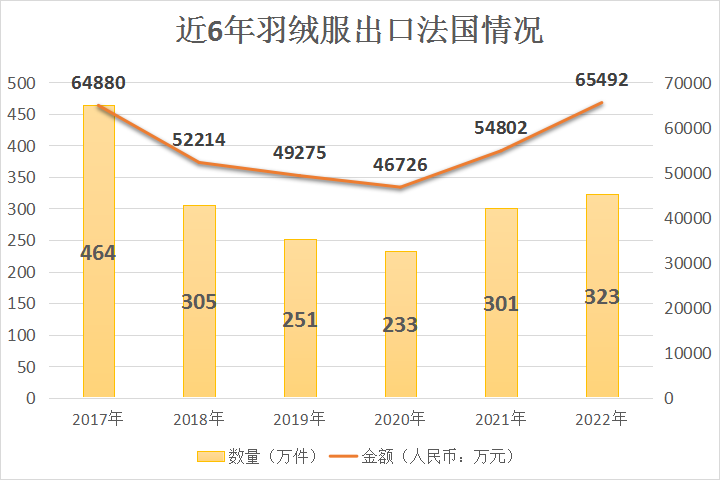
Alternatively, due to the impact of avian influenza, in the past six years, the export data of Chinese down jackets to France has shown a "V" shaped curve of first decreasing and then increasing. With the continuous development of down clothing in China towards the mid to high end, it is becoming increasingly fashionable and may be more popular among French people.
Zhao Yongsheng, director of the French Economic Research Center at the University of International Business and Economics, said, "The difference in economic and trade volume between China and France is significant. Improving economic and trade cooperation between China and France is the main purpose of Macron's visit to China."
On April 13th, the General Administration of Customs announced that the total import and export value of China's goods trade in the first quarter was 9.89 trillion yuan, a year-on-year increase of 4.8%, measured in RMB (the same below). Among them, exports reached 5.65 trillion yuan, a year-on-year increase of 8.4%; Import reached 4.24 trillion yuan, a year-on-year increase of 0.2%.
In March of this year, China's total import and export value was 3.71 trillion yuan, a year-on-year increase of 15.5%. Among them, exports reached 2.15 trillion yuan, a year-on-year increase of 23.4%; Import of 1.55 trillion yuan, a year-on-year increase of 6.1%; The trade surplus is 601.1 billion yuan.
"Overall, China's foreign trade imports and exports showed strong resilience in the first quarter, with a stable and positive start, laying the foundation for achieving stability and quality improvement in foreign trade throughout the year. "Lv Daliang pointed out that he believes that with the continuous overall improvement of China's economic operation, the positive momentum of foreign trade is expected to continue further.
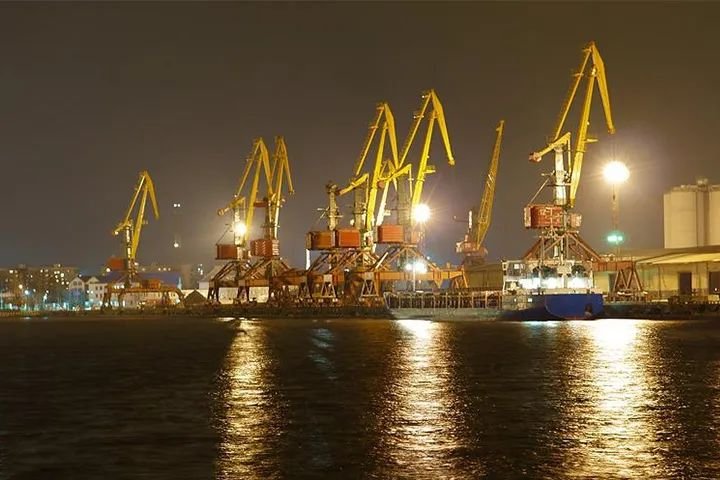
In the first quarter, China's textile and clothing exports to the world amounted to 462.31 billion yuan, a year-on-year increase of 0.6%. Among them, textile exports amounted to 220.45 billion yuan, a year-on-year decrease of 5.1%; Clothing exports reached 241.85 billion yuan, a year-on-year increase of 6.7%.
The data from the first two months initially made domestic and foreign markets not optimistic about China's current foreign trade. However, in March, China's exports not only did not fall into negative growth, but also showed a significant year-on-year positive growth, shattering the bearish expectations in the market, causing China's foreign trade to show a positive trend month by month in the first quarter.
The business data of China Customs also confirms this point. In March, China's export of heavy containers increased by 10.5% year-on-year, while import freight volume increased by 20.3%. Data shows that compared to the first quarter of last year, 25000 more enterprises have carried out import and export business, and the "heat" of foreign trade has steadily increased.
After two quarters of inventory adjustments, Quang Viet and KWONG LUNG's revenue in March has shown a monthly increase. However, due to the continued impact of inflation on clothing market consumption, the overall industrial environment is not as good as last year.
The down jacket OEM believes that this year's operation will be a U-shaped rebound. Although there will be growth in the second quarter, the magnitude is not significant and it is expected to be in the adjustment period, with a comprehensive recovery of growth in the second half of the year.
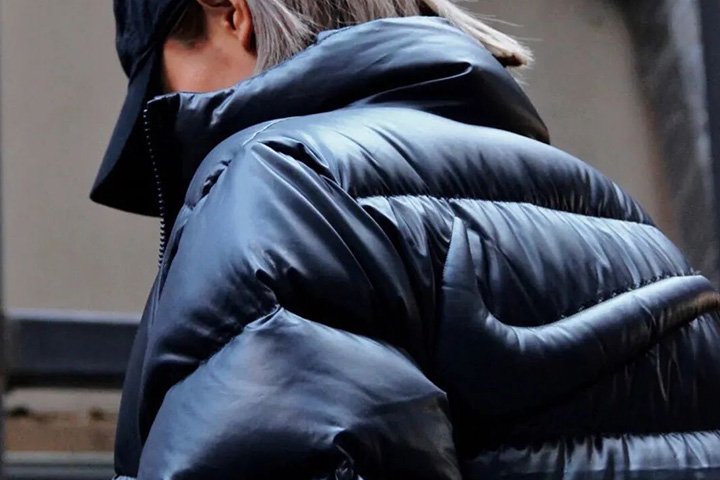
Quang Viet stated that customer inventory reduction has come to an end since the second half of last year, and revenue in the second quarter should be able to grow compared to the same period last year; Although this year has been suppressed by the conservative ordering trend of two major sports customers (Adidas and NIKE), with the growth of new customers and outdoor orders, the average unit price and profit are expected to maintain last year's levels.
Due to the extended delivery time of fabric suppliers, KWONG LUNG pointed out that the clothing department estimated that over $3 million in orders were affected and shipments were postponed to the second quarter. As ready-made clothing has entered the peak shipping season, it is estimated that the growth rate in the second quarter can exceed 50%, and the down material department's shipping momentum has recovered.
bad news
The Vietnam Textile and Clothing Association stated that in March 2023, Vietnam's textile and clothing exports reached approximately 3.298 billion US dollars, an increase of 18.11% month on month and a decrease of 12.91% year on year. In the first three months of 2023, Vietnam's textile and clothing exports reached 8.701 billion US dollars, a year-on-year decrease of 18.63%.
It is expected that textile and clothing companies will still face many difficulties in the second quarter, as purchasing power in markets such as the United States and the European Union has significantly decreased, resulting in many companies not receiving any new orders in April.
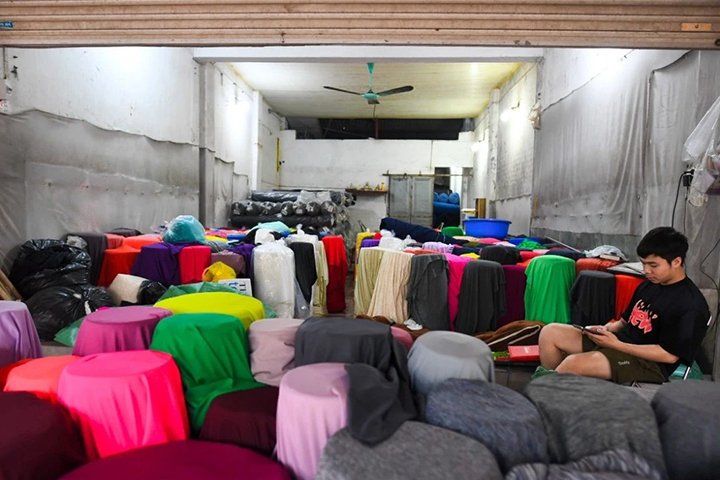
The Ningxie Market in Jialin County, Hanoi is considered the largest fashion and fabric capital in northern Vietnam, with nearly 4000 business households. Previously, the area was always crowded with people entering and leaving for trading goods and transportation, but now there is no longer a sight of this.
Small vendor Ah Wu said that during this period, the revenue has decreased by 50% compared to before. Business is very quiet, and selling clothes or other products can be combined online and offline, but if the fabric is used, customers must personally touch it. This time the sales will be much slower, "said Ah Wu.
 热门排行
中国三大羽绒生产基地之—广东吴川
全球最奢侈羽绒服排行
一件羽绒服需要多少只鸭子的羽绒?
飞丝是什么?能代替羽绒?别被骗了,三种方法让你告别假羽绒服!
2017羽绒原料价格一路上涨,究竟为何?
你的羽绒服为什么钻绒?涨知识了
羽绒被的价格一般是多少 通过成本看羽绒被价格
中国羽绒服四大品牌调查:到底谁才是最强王者?
羽绒金网:羽毛、羽绒、毛绒计价
《羽绒羽毛》、《羽绒羽毛检验方法》新版标准发布,2017年7月1日实施
热门排行
中国三大羽绒生产基地之—广东吴川
全球最奢侈羽绒服排行
一件羽绒服需要多少只鸭子的羽绒?
飞丝是什么?能代替羽绒?别被骗了,三种方法让你告别假羽绒服!
2017羽绒原料价格一路上涨,究竟为何?
你的羽绒服为什么钻绒?涨知识了
羽绒被的价格一般是多少 通过成本看羽绒被价格
中国羽绒服四大品牌调查:到底谁才是最强王者?
羽绒金网:羽毛、羽绒、毛绒计价
《羽绒羽毛》、《羽绒羽毛检验方法》新版标准发布,2017年7月1日实施
 推荐阅读
“吴川力量”助中国羽绒接轨世界
中国三大羽绒生产基地之—广东吴川
中羽协第二期新国标培训班 在“羽绒之乡”广东吴川成功举办
羽绒之乡:贵港桥圩镇将打造旅游休闲特色小镇
广西贵港桥圩镇:打造中国羽绒休闲旅游特色小镇
羽绒金网:羽毛、羽绒、毛绒计价
羽绒别急着收 中央气象台发布寒潮蓝色预警 部分地区降温超12℃
上海消保委检测 千元鹅绒被用鸭毛绒填充
冻哭丨降温10℃!鸡年首个寒潮预警来袭,你准备好了吗?
传统羽绒产业如何实现转型升级?四川玉泉镇产业集群发展
推荐阅读
“吴川力量”助中国羽绒接轨世界
中国三大羽绒生产基地之—广东吴川
中羽协第二期新国标培训班 在“羽绒之乡”广东吴川成功举办
羽绒之乡:贵港桥圩镇将打造旅游休闲特色小镇
广西贵港桥圩镇:打造中国羽绒休闲旅游特色小镇
羽绒金网:羽毛、羽绒、毛绒计价
羽绒别急着收 中央气象台发布寒潮蓝色预警 部分地区降温超12℃
上海消保委检测 千元鹅绒被用鸭毛绒填充
冻哭丨降温10℃!鸡年首个寒潮预警来袭,你准备好了吗?
传统羽绒产业如何实现转型升级?四川玉泉镇产业集群发展